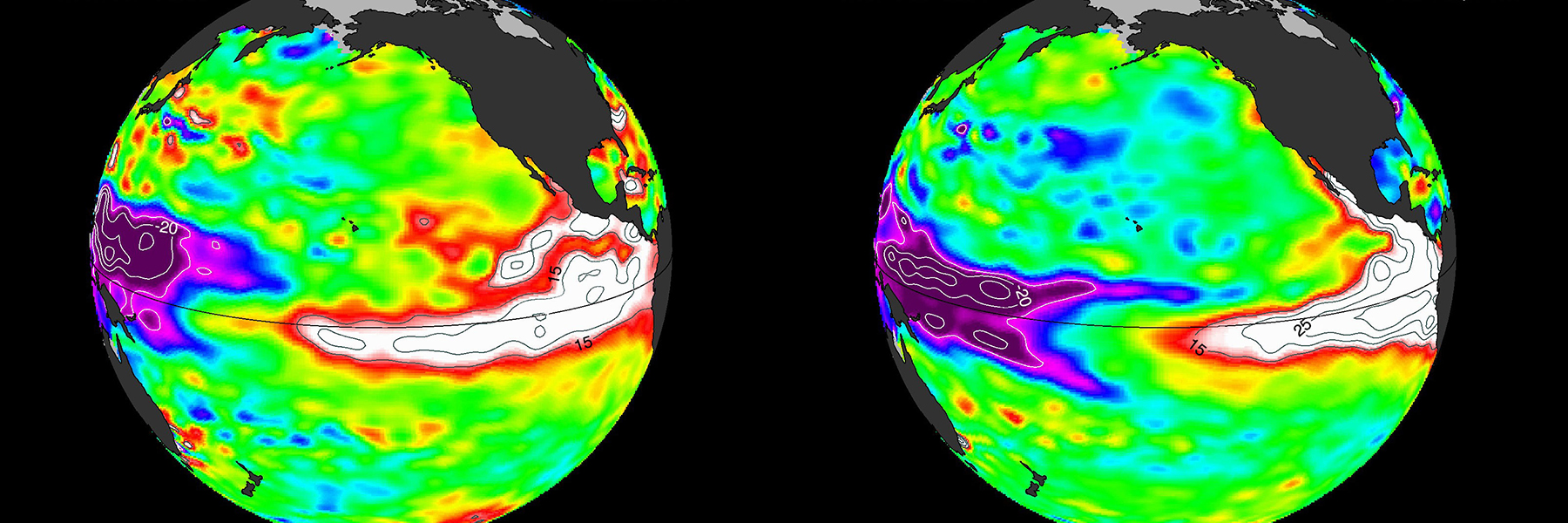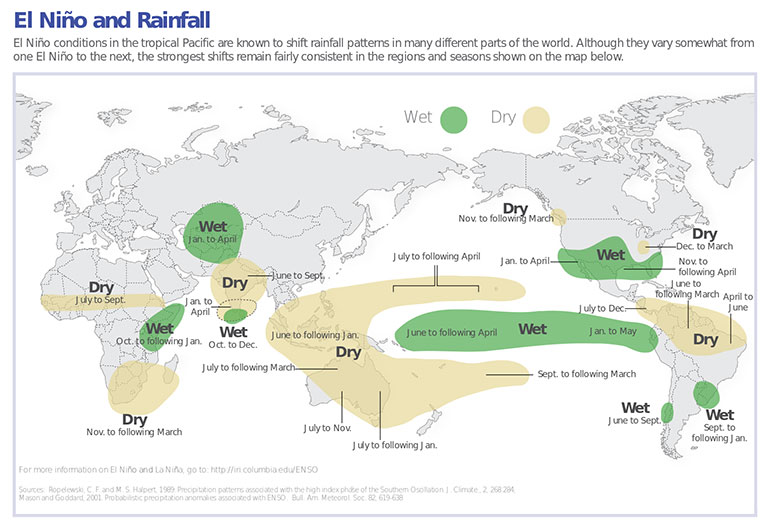What are they, and why work on them?
Teleconnections describe the idea that a perturbation to one region of the globe can cause effects far away from the initial perturbation. A classic example is the El Nino Southern Oscillation, an event that occurs every 2-7 years that, among other things, results in warmer sea surface temperatures in the central or eastern Pacific. (See figure below.)




